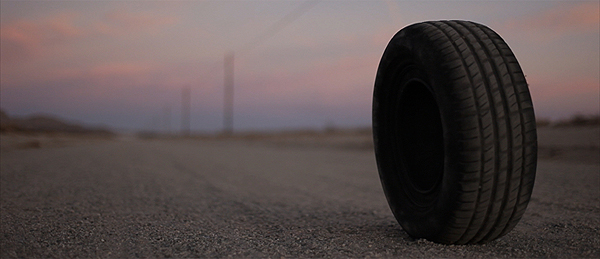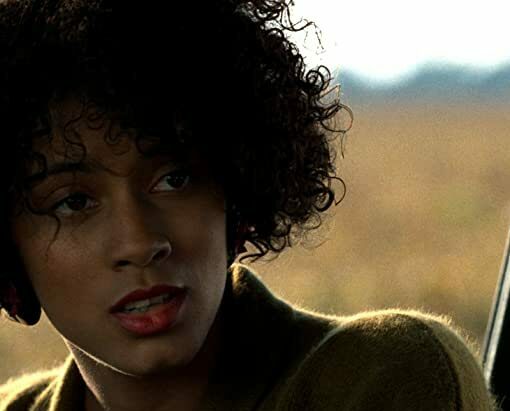The Generation of Nostalgia has lapped up most satirical homages to genres and exploitation films such as Hobo with a Shotgun, but Rubber offers something a little more challenging. How far can an unstoppable force such as a tire go? This 2010 French film found an imaginative way to meet its obligation of a homicidal tire relentlessly rolling over town after town and commenting on the satirical nature of the film itself.

Robert is a tire with the the unique ability to combust any object and has arisen from his partially buried position in the California desert to begin a relentless killing spree. From a far, a gaggle of spectators watch and comment on the events unfolding before them as if it were a film itself. Lieutenant Chad (Stephen Spinella) links the spectators and the killing spree together by attempting to supervise and participate in both narratives.
The first scene of the film immediately and blatantly circumvents the announcement of the whimsical nature of the film itself by humorously pointing out, tongue-in-cheek, that more famous films had elements that were included for “No Reason”. Without actually saying it, the filmmakers suggests that Rubber exists for no reason other than to experiment for shits and giggles. In turn, the film zig-sags between a low-brow kill ’em all and high culture meta-fictional narrative that may satisfy the subscribers of both intellectual poles. This filmic strategy works since the moment a scene appears to lose steam the plot repositions itself towards the other intellectual pole, often times besting itself.
The existentialist theme of “No Reason” begins with Robert who attained life and personifies the need to understand its identity in this cruel world. Including spectators in the film who comment on the situations that appear before them works beyond its top layer. Consider them to be the snide paparazzi or a diverse group of angsty entertainment bloggers since their remarks are not too different than the commentary found in such publications. Later, the film posits all but a few of the spectators as a group of cultist sheep who ultimately do not matter in Robert’s rolling trajectory.

The cinematography is where the film truly gains its legitimacy. Having to deal with live locations while performing stop-motion animation is a difficult task, and Rubber pulls it off. The film makes use of hard focus to lure your attention away from the inconsistency of the background toward the right objects, completely suturing you into the narrative. As the film presses on, there is a lull in the pacing. Thankfully, the film is just shy of ninety minutes and ends just before the plot becomes too tired.
Comedic homages to cult genres and trends of yesteryear have grown in popularity. Grindhouse and Hobo with a Shotgun attempt to stick to the sacred structures of these genres while films such as Black Dynamite and Rubber choose to overthrow the common tropes with satire. They hold up the mirror to exploitation films of the past to show where the failures are and in turn capitalize on it. Rubber works because it is a parody of itself, and the filmmakers go there by not taking themselves too seriously, and seriously did a good job at it.
Reviewed by Aaron Weiss (visit his website CINEMAFUNK)






One thought on “Quentin Dupieux’s Rubber”
Excellent review!